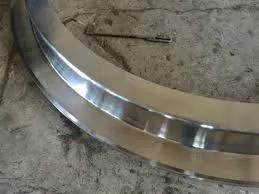Nov . 30, 2024 22:24 Back to list
condensing heat exchanger
Understanding Condensing Heat Exchangers Principles and Applications
In the realm of thermal engineering, heat exchangers play a pivotal role in energy transfer processes. Among these, condensing heat exchangers stand out due to their unique ability to recover and utilize heat from vapor condensation. This article delves into the principles, designs, and applications of condensing heat exchangers, emphasizing their importance in efficiency and sustainability.
What is a Condensing Heat Exchanger?
At its core, a condensing heat exchanger is designed to transfer heat from a gas or vapor to a fluid, typically resulting in the gas or vapor condensing into a liquid. This process involves the change of phase from vapor to liquid, which occurs when the vapor temperature drops below its dew point, releasing latent heat. The heat recovered can be utilized in various thermal applications, significantly enhancing the overall energy efficiency of the system.
Working Principles
The operation of condensing heat exchangers is rooted in thermodynamic principles. When a vapor enters the heat exchanger, it is directed over surfaces that are cooler (often involving water or another liquid), facilitating heat transfer. As the vapor cools and loses energy, it condenses into a liquid. The latent heat released during this condensation process is absorbed by the coolant, which can be used for heating purposes or redirected to other parts of the system for further energy utilization.
The efficiency of a condensing heat exchanger can be influenced by several factors, including the temperature differential between the vapor and the coolant, the flow arrangement (counterflow or parallel flow), and the material properties of the heat transfer surfaces. Counterflow designs, where the vapor and coolant flow in opposite directions, are often more efficient due to the greater temperature gradient maintained throughout the length of the exchanger.
Designs of Condensing Heat Exchangers
There are various designs of condensing heat exchangers, each suited for different applications and operational needs
1. Shell-and-Tube Heat Exchangers This traditional design consists of a series of tubes (the tube bundle) housed within a larger shell. The vapor passes through the tubes, while the coolant flows around the outside, efficiently transferring heat.
2. Plate Heat Exchangers Comprising multiple thin plates stacked together, this design provides a large surface area for heat exchange in a compact volume. Plate heat exchangers are efficient for heat recovery applications but may require maintenance to prevent fouling.
condensing heat exchanger

3. Air-Cooled Heat Exchangers These exchangers utilize air as the cooling medium and are often found in outdoor applications. They are designed to operate effectively even at low ambient temperatures but may have limitations in regions with high humidity.
Each design has its advantages and specific use cases, depending on the parameters like space availability, operating temperatures, and the nature of the fluids involved.
Applications
Condensing heat exchangers are widely utilized across various industries due to their efficiency in heat recovery. Some significant applications include
- HVAC Systems In heating, ventilation, and air conditioning (HVAC) systems, condensing heat exchangers recover waste heat from exhaust air or flue gases, allowing for improved thermal efficiency and reduced energy consumption.
- Power Generation In power plants, especially those using combined cycle technology, condensing heat exchangers optimize the energy output by recovering waste heat from the turbine exhaust, thus enhancing overall performance.
- Chemical Processing These heat exchangers are pivotal in chemical manufacturing processes, where they help maintain optimal temperatures for reactions by reclaiming heat from vapor streams.
- Refrigeration In refrigeration systems, condensing heat exchangers play a crucial role in cooling and condensing refrigerants, contributing to the system's energy efficiency.
Conclusion
Condensing heat exchangers are vital components in modern thermal systems, enabling efficient heat recovery and sustainability across various industries. As energy costs rise and environmental concerns increase, the role of these exchangers will become even more crucial. By embracing advanced designs and optimizing their operation, industries can leverage condensing heat exchangers to improve energy efficiency, reduce operational costs, and contribute to a greener future. The ongoing research and technological advancements in this area promise even more innovative solutions and applications, making it an exciting field for both engineers and environmentalists alike.
-
Durable Centrifugally Cast Iron Water Main Pipe
NewsAug.11,2025
-
Centrifugally Cast Iron Water Main Pipes for Reliability
NewsAug.10,2025
-
High-Quality Centrifugally Cast Iron Water Main Pipes
NewsAug.09,2025
-
Durable Cast Iron Water Main Pipe & Drainage Solutions
NewsAug.08,2025
-
Buy Cast Iron Pipe: Premium Ductile Iron & Drain Solutions
NewsAug.07,2025
-
Durable Cast Iron Water Main Pipe | Buy Ductile Pipe
NewsAug.06,2025


